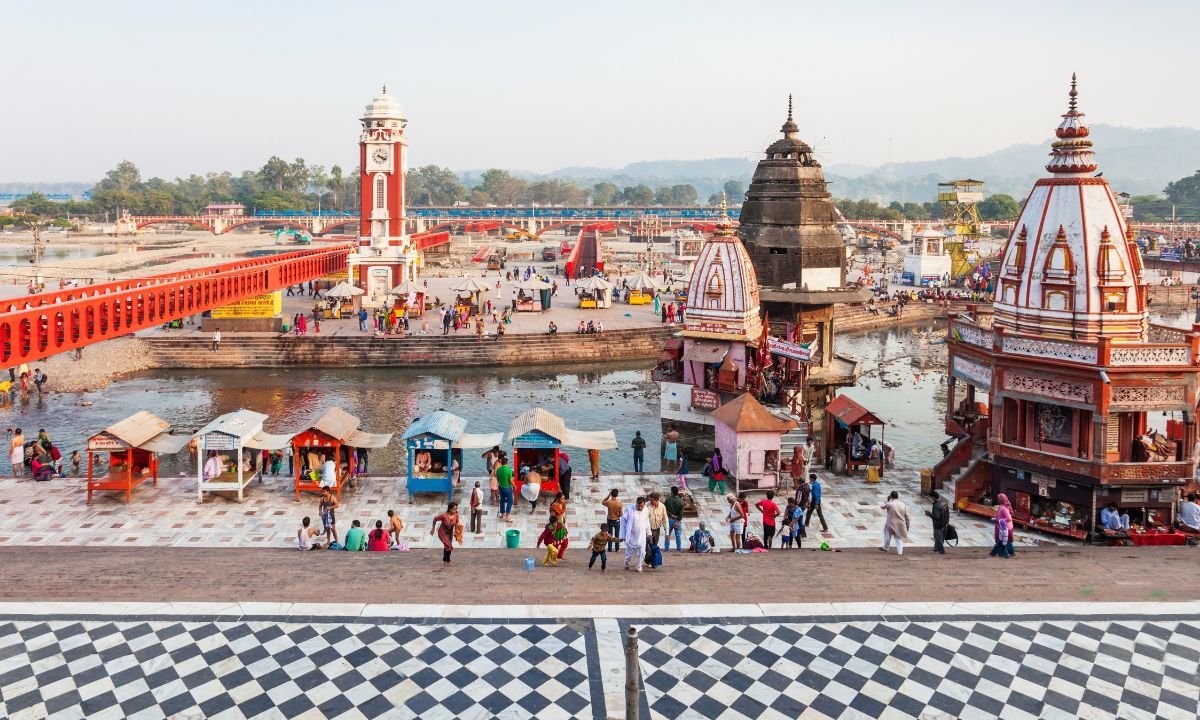From its origins in ancient mythology to its evolution as the world’s largest spiritual gathering, the Kumbh Mela is no stranger to transformation. As preparations accelerate for Kumbh Mela 2027 in Nashik and the much-anticipated Maha Kumbh Mela 2037 in Prayagraj, one major force driving this evolution is technology.
- Technological Innovations Expected at Kumbh Mela 2027 and 2037
- 1. All-in-One Pilgrim Apps
- 2. Smart Surveillance and Crowd Management
- 3. Biometric Registration and RFID Tracking
- 4. Virtual Spiritual Experiences
- 5. Digital Infrastructure Enhancements
- 6. Intelligent Mobility Systems
- 7. Multilingual AI Help Desks
- 8. Tech-Enhanced Ritual Participation
- 9. Immersive Cultural Documentation
- In Conclusion
Technological Innovations Expected at Kumbh Mela 2027 and 2037
Let’s explore the major technological innovations expected at Kumbh Mela 2027 and 2037, designed to make the pilgrim experience smarter, safer, and more spiritually immersive.
1. All-in-One Pilgrim Apps
Dedicated mobile applications will serve as the central hub for pilgrims:
- Real-time Snan schedules
- Live navigation inside the Mela grounds
- Accommodation booking status
- Spiritual event calendars
- Language-based custom interfaces
- Emergency contacts and health kiosks
Expect apps to evolve from simple guides to AI-powered travel companions, personalized with your preferences and spiritual goals.
2. Smart Surveillance and Crowd Management
Managing crowds of 40–50 crore pilgrims is no easy task. Innovations will include:
- AI-based CCTV surveillance for live crowd density monitoring
- Geo-fencing technology to prevent stampedes
- Facial recognition alerts for missing persons
- Drone monitoring for crowd and traffic control
- Heat mapping for identifying congested zones
These systems will help both authorities and pilgrims stay informed and secure.
3. Biometric Registration and RFID Tracking
Future Kumbh Melas will likely use:
- Biometric registration booths at entry points
- RFID wristbands or lanyards with unique pilgrim IDs
- Integration with health records, group IDs, or senior citizen passes
- Real-time tracking for crowd dispersal and lost persons recovery
These smart tools will reduce queues, paperwork, and manual errors—especially helpful during peak days.
4. Virtual Spiritual Experiences
Not every seeker can physically attend the Mela. That’s why Kumbh 2027 and 2037 will prioritize:
- Virtual Darshan of the Shahi Snan
- 360-degree livestreams of river aartis
- AR-enabled temple walkthroughs
- Interactive satsang platforms with saints and gurus
- Spiritual metaverse integration for remote participation
This will make the Kumbh accessible to senior citizens, NRIs, and global devotees.
5. Digital Infrastructure Enhancements
Both Nashik (2027) and Prayagraj (2037) will see dramatic upgrades in digital connectivity:
- Public Wi-Fi hotspots throughout the Mela zone
- E-toilets and app-enabled sanitation alerts
- QR-based check-ins at camps and dining halls
- Solar-powered charging stations for pilgrims’ devices
- Multi-language voice assistants at help booths
These upgrades will bridge the digital divide and empower every category of visitor.
Also read : Big Changes at Maha Kumbh Mela 2037 You Should Know About
6. Intelligent Mobility Systems
Getting around the vast Mela area will be easier with smart transport solutions:
- GPS-tracked shuttle buses and e-rickshaws
- Digital bus stop boards showing wait times and crowding
- Automated traffic redirection systems
- Pilgrim mobility cards linked to e-wallets or Aadhaar
- Dedicated fast lanes for medical emergencies and the elderly
This ensures maximum movement with minimum confusion.
7. Multilingual AI Help Desks
AI-driven virtual help desks and voice assistants will be introduced for real-time support in regional and foreign languages:
- Locate lost items or people
- Get directions to nearest ghats, camps, or toilets
- Know real-time Snan schedules
- Emergency service assistance
- Ritual-related FAQs and timings
This feature will especially benefit first-timers, foreigners, and elderly pilgrims.
8. Tech-Enhanced Ritual Participation
Even traditional rituals will integrate with tech for broader participation:
- Digital puja bookings with SMS/QR confirmation
- Live group chants via synced mobile apps
- Interactive bhajan screens in large gathering zones
- LED Aarti zones where distant pilgrims can follow synchronously
This brings more pilgrims into the rhythm of spiritual practice – even at a distance.
9. Immersive Cultural Documentation
Tech will also help preserve and showcase the heritage of Kumbh:
- Drones capturing aerial views of Shahi processions
- Archival-quality photo and video projects
- AI-enhanced translations of speeches, scriptures, and katha sessions
- Augmented Reality exhibitions on Kumbh history
In Conclusion
As Kumbh Mela 2027 and 2037 approach, technology will not replace tradition – it will elevate and support it. These innovations will make the pilgrimage safer, more accessible, and more meaningful for millions of attendees.
If you’re planning to attend either Kumbh, start preparing now – not just spiritually, but also digitally. Because the future of faith is not just sacred… it’s also smart.





